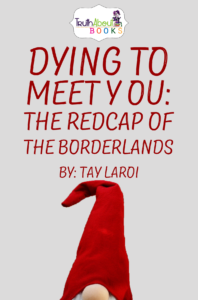 What sort of creature do you think of when you hear the world “fairy?” Odds are, thanks to popular media’s portrayal, images of Tinkerbell, tiny homes built into trees, and dresses made of leaves and flowers come to mind. While the innocent, playful, light-hearted fairy is familiar to most, you would be hard pressed to find anyone who saw them as harmless before the Victorian Era. Native to the British Isles and going by various names, “fairies” were once as dangerous as they were beautiful. They were to be treated with caution and respect, less they steal your children or curse you if you got off lucky. If you were to cross paths with one of the more malicious fair folk, such as a redcap, you had better fear for your life.
What sort of creature do you think of when you hear the world “fairy?” Odds are, thanks to popular media’s portrayal, images of Tinkerbell, tiny homes built into trees, and dresses made of leaves and flowers come to mind. While the innocent, playful, light-hearted fairy is familiar to most, you would be hard pressed to find anyone who saw them as harmless before the Victorian Era. Native to the British Isles and going by various names, “fairies” were once as dangerous as they were beautiful. They were to be treated with caution and respect, less they steal your children or curse you if you got off lucky. If you were to cross paths with one of the more malicious fair folk, such as a redcap, you had better fear for your life.
The redcap was said to inhabit abandoned castles in the Borderlands between England and Scotland, waiting for travelers to lose their way and seek out shelter for the night in their domain. Then they would murder the poor traveler with the iron staff in its gnarly, talon-like hand. If the traveler had his wits about him and managed to spot the creature’s red eyes within the shadows of the castle, praying would do him more good than running. According to legend, it was impossible to outrun a redcap.
With the unfortunate stranger dead, the redcap would dye its hat in his blood, hence where the creature gets its name. It had better hope that travelers get rather often because if a redcap’s hat dries out, it would die.
While not a popular figure, redcaps do make appearances from time to time. They pop up in Holly Black’s Tithe and In the Darkest Part of the Forest, Hermione Granger makes mention of them in Prisoner of Azkaban, and they even show up in an episode or two of Supernatural, but, despite the terror they could inflict, they’re not featured often in contemporary fantasy.
That’s no reason to be careless, however. They’re being so unknown may simply be that they’re craftier than other creatures. If you ever find yourself near abandoned buildings of any sort, especially after dark, use caution. We’d hate to have you become part of a fashion statement.

